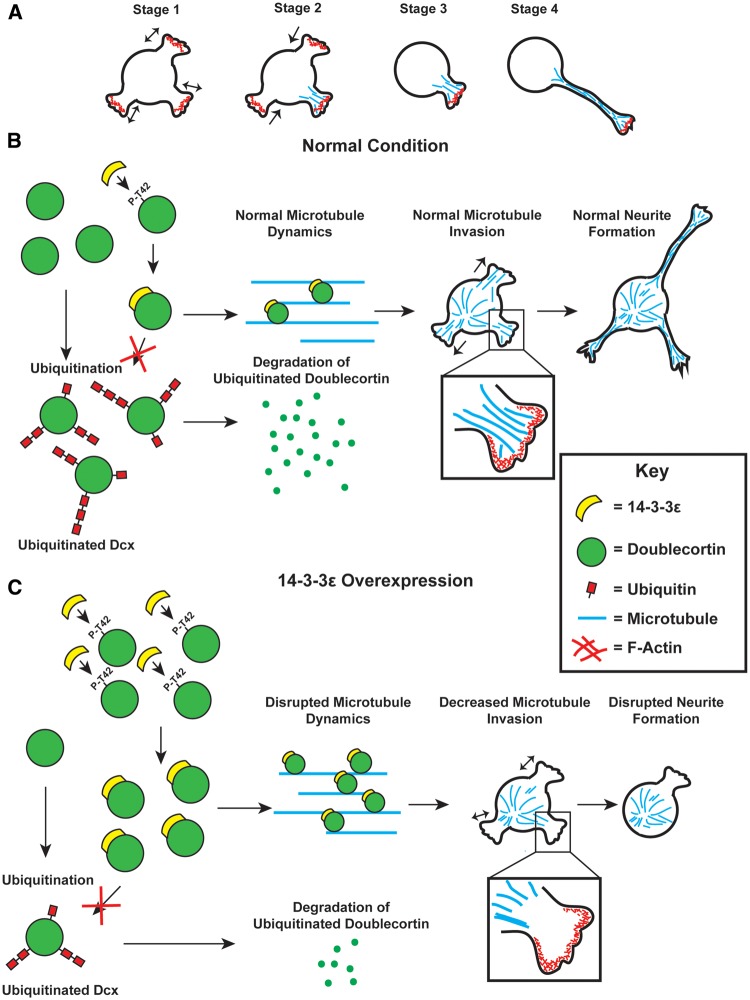Figure 7.
Schematic illustration of proposed mechanism (A) Schematic illustration of the stages of neurite initiation. In stage 1, lamellipodia type structures rapidly form and retract. In stage 2, microtubules begin to invade and stabilize lamellipodia structures preventing their collapse. In stage 3, neurites that have been invaded by microtubules become stable structures and next begin to extend in stage 4. (B) Under normal condition, 14-3-3ε binds to Dcx at phosphorylated threonine-42 (P-T42). Remaining Dcx that is not bound by 14-3-3ε is rapidly ubiquitinated and subsequently degraded. Dcx stabilized by 14-3-3ε, preventing its ubiquitination and subsequent degradation, binds to microtubules allowing for normal microtubule dynamics. During initial neurite formation microtubules are able to enter and stabilize lamellipodia type structures allowing for normal neurite initiation. (C) When 14-3-3ε is overexpressed, there is increased binding of 14-3-3ε to Dcx, preventing its ubiquitination and subsequent degradation resulting in an increase in Dcx protein levels. The increased Dcx binds to microtubules in excess, and this disrupts microtubule dynamics. This prevents microtubules from invading lamellipodia type structures during neurite initiation thus inhibiting normal neurite formation.

